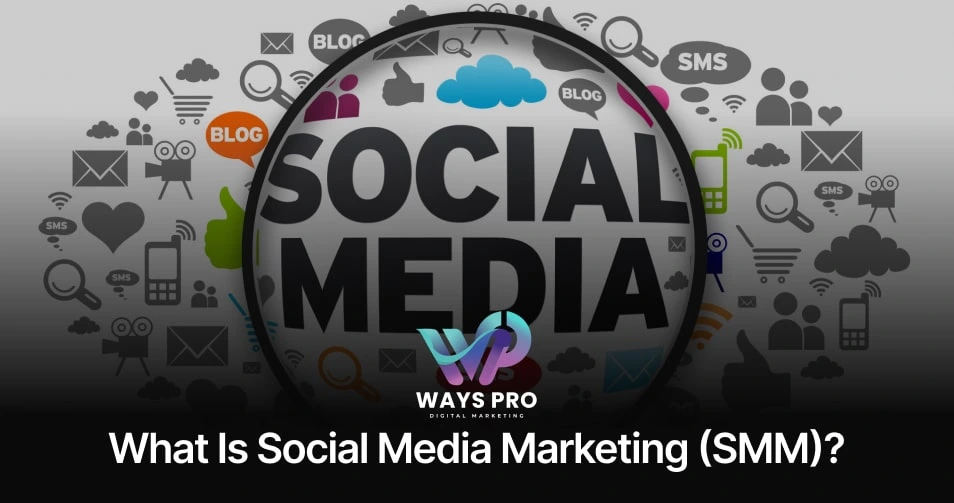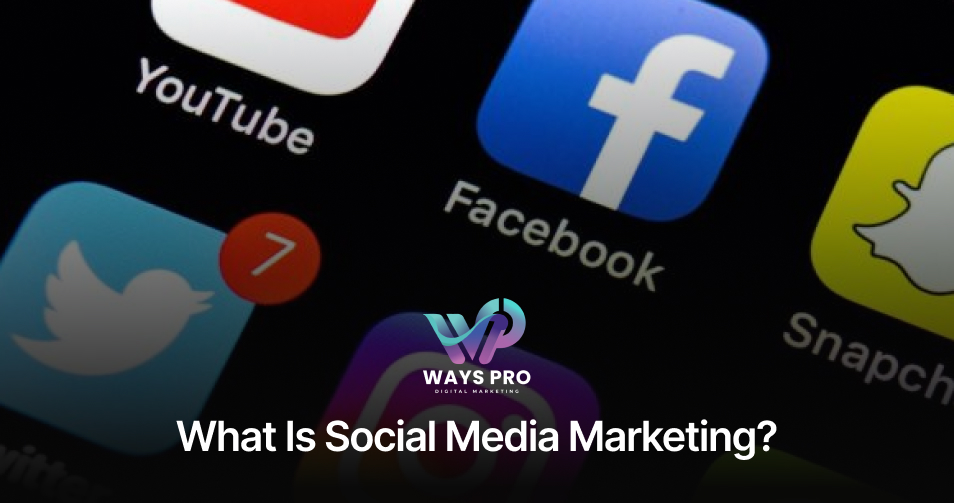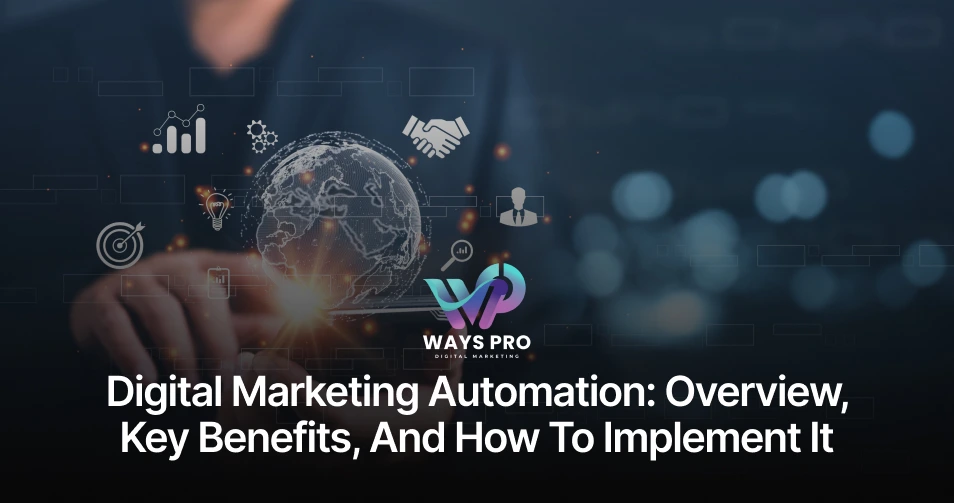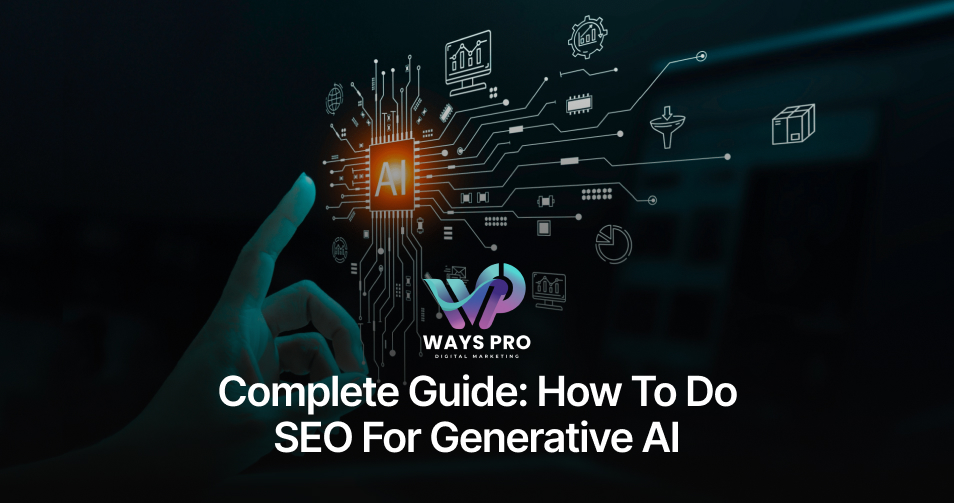In this tech-savvy era, communities are evolving each day with digital integrations. Our methods of communicating and interacting with each other have also evolved so far.
At the same time, businesses have also shifted their modes of marketing from physical to digital – and here, social media platforms have hit the ground that have doubled the marketing efficiency in every industry.
It provokes the concept of Social Media Marketing which has been around us for so long but only a few of us utilize and cash it up properly.
Luckily, you will get all the profitable knowledge about social media marketing here. From its overview to the expert nuances, we’ll discuss Everything You Need to Know About Social Media Marketing (SMM).
Social Media Marketing (SMM) is a contemporary evolution of traditional marketing as a business promotion strategy that ensures the interaction between businessmen and their potential buyers via social networks.
The objective of SMM is not much different from conventional marketing, the difference is that instead of using Television, Billboards, and Radio advertisements SMM uses social media platforms to convey the brand message.
Historically, we find various traces that show the rise of social media networking. Significantly, Andrew Weinreich’s SixDegrees.com in 1997. However, the year 2006 ignited the real rocket of social media marketing when Chase credit cards started to advertise in the form of banner ads.
From 2006 till the present, with the rise of social media platforms like Facebook, Instagram, Twitter, LinkedIn, and TikTok, businesses now have access to billions of potential customers.
Social Media Marketing uses these platforms to convey specific and relevant messages in creating the right brand perception and maintaining close and strong customer relations. Businesses can now easily engage with their audience in real time, share updates, promotions, and insights, and drive traffic to their website or physical stores.
At its core, social media marketing involves identifying your target market, informing them about products you wish to sell to them, and convincing them to take specific actions regarding these products. It includes purchasing a product, subscribing to a service provider, or even interacting with a brand. Marketing communication applies various techniques, methods, and channels to communicate with individuals where they are receptive.
The Power Behind Social Media Marketing (SMM)

Social media marketing or SMM has emerged to be a critical factor in the success of any business that operates in the modern world. With billions of users currently using social media giants such as Facebook, Instagram, Twitter, and LinkedIn among others, SMM’s power is born out of its unique feature of connecting brands directly with their target audience. While compared to conventional advertising, social media offers an opportunity to respond promptly to clients’ actions and establish long-term partnerships with them.
According to recent statistics, over 5.45 billion people use social media worldwide which is about 67.1% of the world population. Such a swarm of social media users makes it one of the most effective ways to reach potential customers.
Just picture your brand advertises through social media and reach people in different parts of the world, creating brand awareness and scaling up sales in a frequency that conventional marketing can hardly emulate.
SMM allows highly relevant and specific advertising because your ad can be posted in a certain geographic location or targeting a certain age range, or people with specific interests and activity rates. Such level of detail is what makes SMM very affordable where small businesses can counter large corporations they are up against.
With today’s digital consumer in mind, brands must be social media-active. When properly implemented, SMM is not only able to generate exposure but also reputation and credibility which are the pillars of success in the modern world.
How does Social Media Marketing (SMM) Function?
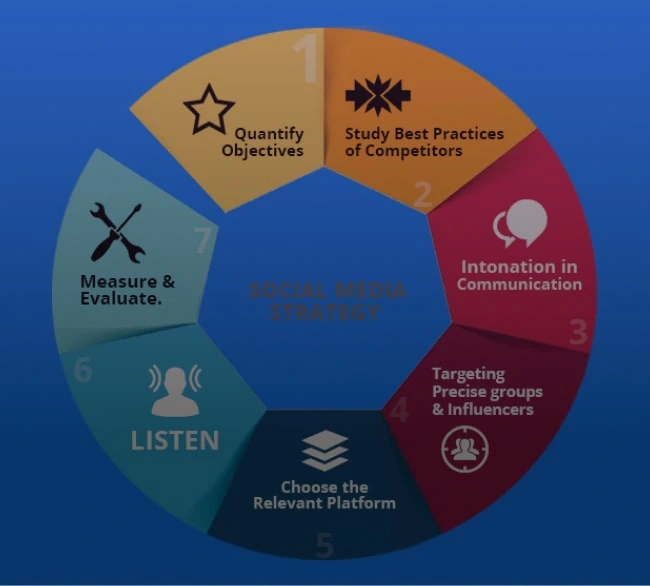
The core functions involved and make social marketing successful are:
- Content Creation
- Audience Targeting
- Social Media Advertising
- Engagement and Interaction
- Analytics and Reporting
- Influencer Collaboration
- Brand Awareness Building
- Social Listening
- Lead Generation
- Reputation Management
Social Media Marketing or SMM functions in identifying social networks for the promotion of commercialization of a business, making the brand noticeable, and interacting with its potential customers. Now let’s look at a simple example to better understand how it functions.
Let’s consider an example of the local bakery shop, “Sweet Treats”, which needs to increase the number of customers and become more popular on social media. They start by developing the company’s profiles on various recognized social media platforms, such as Instagram or Facebook. Their SMM plan includes publishing photographs of yummy cakes, and confectionery, filming and offering glimpses of the behind scenes of baking a cake, and providing their followers with special offers.
By creating such interesting posts, Sweet Treats begins gaining some loyal fans with people leaving their comments and sharing the posts of the bakery. They also paid ads to market to people in their locality who have an interest in food and baked items. Further, using Facebook technical targeting options, Sweet Treats can ensure that their ads will display to the best audience and the individuals who will definitely visit the bakery and increase the business’s foot traffic.
Also, they directly communicate with customers by replying to comments and messages on their social media handles resulting in building customer loyalty.
This example reveals how SMM is beneficial to businesses in enhancing their brand awareness and transforming their online interactions into profitable sales.
What are the 7 C’s of Social Media Strategy?
Successful social media marketing requires a robust strategy. But why need a strategy? Isn’t it enough to complete all of the functions and be done with social media marketing? The answer is No!
Social media marketing along with having a strong strategy provides you a pathway to marketing success. Using the right platform, putting right efforts, investing appropriate budget, targeting potential audience, and more – a perfect strategy encompasses all of them.
On the same ground, the battle got more competitive when the 7 C’s of Social Media Strategy evolved based on the 7 C’s of Communication by Cutlip and Center.
These 7 C’s are designed to let businesses create a full-fledged social media strategy for the company with a focus on engagement and the audience. Thus, brands can have more elaborate and impactful social media strategies if they focus on these.
- Content: Produce useful, appropriate, and fascinating content.
- Community: Establish a community of supporters and engaged people around your brand.
- Conversation: Immersive two-way communication with your target audience; for example, comments-replies, quick responses to messages, etc.
- Connection: Connect well with your audience in terms of values.
- Continuity: Continuously post and engage often with the brand over some time.
- Context: Match your content creation to support the chosen platform and the expectations of its users.
- Conversion: Convert followers and any form of engagement into tangible leads or sales targets.
Measuring Success: Tracking Social Media Metrics
There are several key metrics to measure, including engagement, reach, leads, conversion rate, and ROI.
Key Social Media Metrics:
- Engagement: Likes, comments, shares, and overall engagement with your content.
- Reach: Shows the amount of persons who visit your content.
- Leads: Records the number of leads or how many people expressed their interest in transacting with you in products or services you offer.
- Conversion Rate: Calculates the proportion of visitors who perform a specific activity, whether on a site or after leaving it.
- ROI: Determines the financial benefits of social media communication strategies compared to the implications for costs.
Measuring these metrics enables the enhancement of the Social Media Optimization daily/weekly/monthly and yearly basis.
Why Measure Social Media Marketing Success:
Tracking social media marketing success is important because it assists a business in knowing whether or not it is making progress towards its objectives, or if it needs to adjust some of its strategies. It also shows what has been done successfully and what has not been done as expected.
What Is The Benefit Of Measuring Success:
The advantage of applying the success metric is in the assessment of the customer behavior, enhancing interaction, and ROI. The result is that businesses can focus on where to invest more time and money in this analysis-driven approach. This way, they can save their efforts, time, and investment and put it in the right place.
What are the Pros and Cons of Social Media Marketing (SMM)?
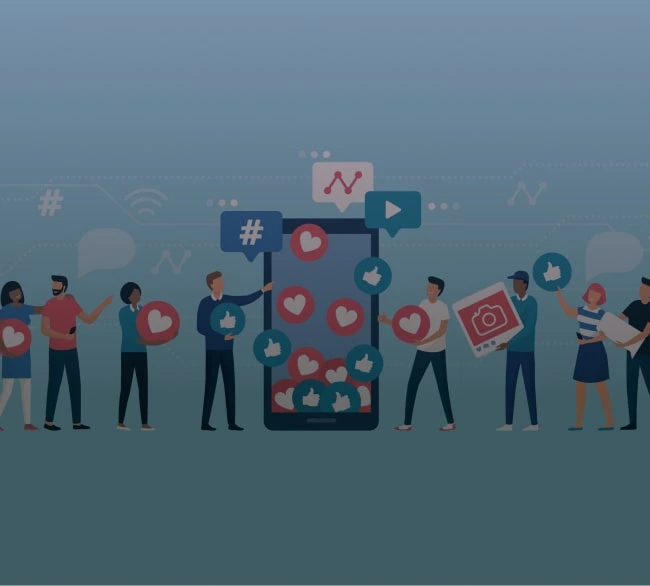
Pros of Social Media Marketing:
- Increased Brand Awareness:
Businesses attain high visibility by using social media platforms since they provide a pool of potential customers.
- Cost-Effective:
As opposed to conventional advertising, SMM is rather inexpensive and accessible for promoting different goods or services, especially for startups.
- Targeted Advertising:
Businesses can set particular demographics because of social media, such as Facebook and Instagram, that target the right people.
- Direct Engagement:
SMM allows users to respond in real-time to customers, facilitating relationships and loyalty.
- Performance Metrics:
Social media is also full of analytics which help to determine how successful the campaigns of a specific business or organization are and fine-tune the results if necessary.
Cons of Social Media Marketing:
- Time-Consuming:
Marketing on different platforms is time-consuming thanks to content creation and participation in the groups and pages.
- Constant Algorithm Changes:
Fluctuations in the algorithms of social media platforms will lead to decreased organic engagement, posing a challenge to organizations trying to get a hold of their target audience. For example, Facebook changed its algorithm many times in 2023, and self-promotion became quite ambiguous, posting content and audience reach also became a problem.
- Negative Feedback:
Public platforms are risky to businesses because they are in the open, and any post regardless of whether good or bad will reach many people hence affecting the business’ reputation.
- Limited Control:
Business owners do not exert much influence over how the message is framed since social media platforms set the format.
- Ad Fatigue:
Excessive ads may demotivate users and discourage them from continuing with the application as they are flooded with adverts they may not find useful at that point.
Explaining Sticky Content in Social Media Marketing

What is Sticky Content?
Sticky content refers to engaging, memorable, and shareable content that focuses the consumer’s interest and prompts them to remain longer on your page or website. That is the kind of content that makes people keep on coming back and leads to increased user activity.
What is an example of Sticky Content?
One of the best examples of sticky content is Coca-Cola’s “Share a Coke” campaign.
It created a sense of everyday relatability to bottles by putting a name on the bottle and that made people look for and share photos of the bottle with that specific name on social media.
This approach was engaging and personally generated a lot of interest in the brand and prompted people to interact with the brand while sharing their experiences with others.
How to Use and Profit from Sticky Content?
Creating sticky content can be advantageous to your brand as it can improve the time users spend on your social media pages, as well as the chances of content sharing.
As more people engage with your sticky content it can get you more impressions that will bring greater audience and possibly better conversion rates.
Besides, the constant changes in social media algorithms enable interacting content to stay popular in the user feeds rather than less engaging content.
What Makes Marketing Go Viral on Social Media?
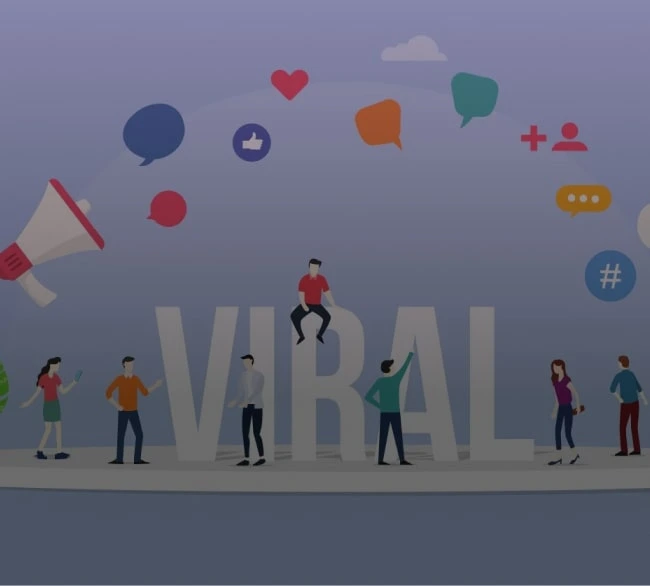
Emotion – the King of Virality
Today, social media is populated with regularly posted content. But when it comes to the game of going viral, then “Emotions”, “emotional engagement”, and “emotional content” own the crown.
Viral marketing based on social networks depends on emotional involvement, which is one of the strongest incentives to share content. Whenever people feel passionate – be it from joy, surprise, or sorrow – they desire to share the experience with others.
Psychology Behind Virality
Emotional content taps into basic human psychology such as the desire for belonging and recognition.
Also, the audience aims to be involved in something greater, and a moving post makes them recall their belongingness in a culture with those beliefs.
Psychologically, viral content often triggers curiosity, fear of missing out (FOMO), or a sense of belonging.
For example, materials that make us shocked or amazed force users to share with their friends as they wish that someone could impress them too. People get a reward when their brain produces dopamine as a result of an emotional stimulus, thus the unconscious desire to share it.
Also, Remember that:
Users post certain content to give an impression that they are informed or, on rare occasions, that they care, concerning their reference group’s self-image. Marketers who create content that is easily shared, funny, or provocative – such as stories, an inspiring quote, or a funny challenge on a social network are more likely to watch their campaigns go viral. Making content emotional has an impact that stands out and is not just seen and consumed and then forgotten or deleted but shared.
What Is Earned Media in a Social Media Context?
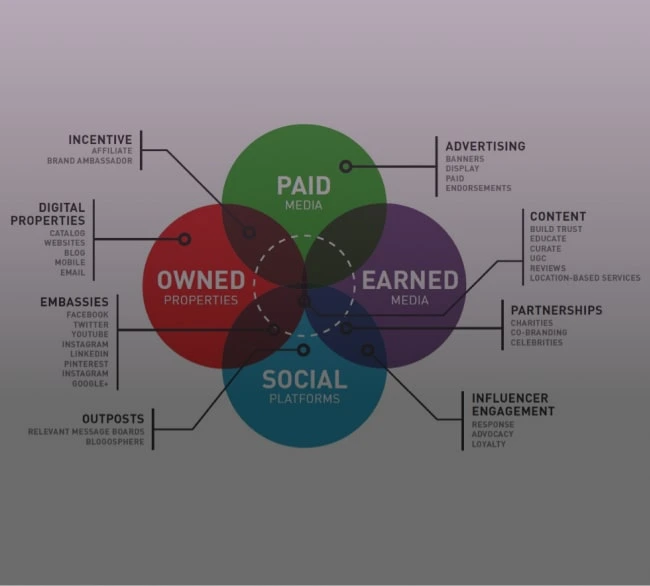
The meaning of earned media in the social media context is the marketing that results from a form of self-promotion or organic marketing rather than through paid advertising.
This comprises organic shares, mentions, and positive reviews from either the customers or some influencer. Simply put, it is the extension of free publicity that a brand gets if people interact with the content created by the brand and talk about the same.
Examples of Effective Social Media Marketing Tactics
Social media marketing tactics are the specific activities performed on a social media platform to attract the audience, create awareness & convert them into potential customers. These strategies are useful to reach the target market and accomplish marketing objectives as much as possible.
Here are the best social media marketing tactics you should try out.
Influencer Collaborations
Collaboration with influencers in your relevant industry means you are opening your business to their followers. For example, a fashion brand partnering with an influential YouTuber to market news collections and outfits will make customers within the audience buy and wear clothes based on that YouTuber’s influence.
User-Generated Content (UGC)
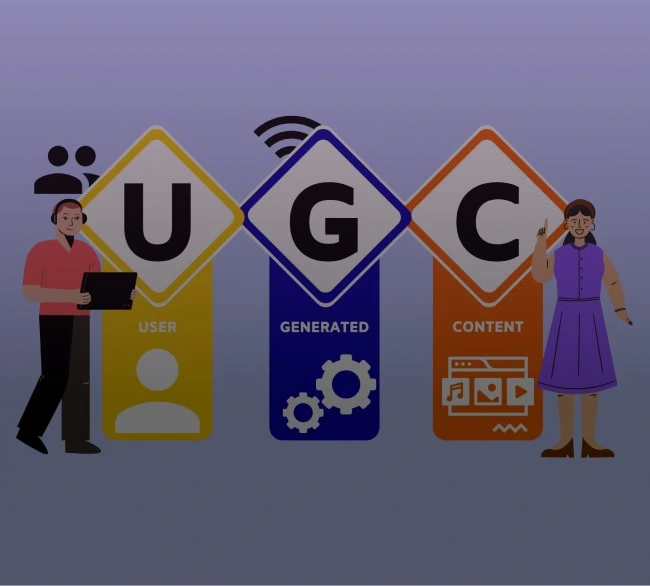
It is another effective social media marketing tactic that works out! In this strategy you make your customers share their experiences using your products. Let’s say, a beauty product manufacturing company can take users through challenges and ask them to post selfies while using the products; the content generated will be original and people will trust the brand.
Giveaways and Contests
Promotions or giveaways entice followers to use the sharing, liking, or tagging functions or invite others. For example, if you’ve your food brand you can engage your audience with a “Cook & Win” campaign where consumers cook recipes with your brand’s ingredients, and get a chance to get rewarded twice; once by increasing their own followers or social recognition, secondly with a prize from your brand.
Interactive Stories and Polls
If you want to increase your level of engagement then you should create interactive stories with the polls or quizzes. If you have a travel service brand, you can use polls & collect followers’ opinions on where they like to go for their next vacation. This strategy will make your audience continually engaged with your brand.
The Bottom Line on Social Media Marketing

The bottom line of social media marketing is that it’s a must-have strategy for any business looking to expand its outreach and build a customer base.
Records in 2024 reflect that 5.07 billion people, which is approximately more than half of the global population, believe in the power of social media marketing and its ability to open opportunities to build meaningful relationships, engage customers, and promote products effectively.
Alongside, consistent, engaging, knowledgeable, and authentic content is the compulsory tool for driving success and impacting the bottom line of businesses.
Here are the major bottom-line impacts you can experience with effective social media marketing
Increased Brand Awareness:
The bottom line is that social media marketing escalates the prominence of a brand significantly. With millions of users on social sites such as Facebook and Instagram, regular involvement means more people, which finally results in greater recognition and awareness.
Enhanced Customer Engagement
Another bottom line of social media marketing is that it can facilitate direct communication with customers. Staying in touch with your audience through comments, polls, and messages helps you maintain a consistent and strong relationship with the customer, which helps drive retention and satisfaction levels.
Higher Conversion Rates
The biggest impact of social media marketing strategy is the ability to make conversions. By posting appropriate content, adverts, and encouraging posts, businesses can drive traffic to their websites. It increases the chances of conversions of the followers into customers and, finally, sales.
Key Insights and Takeaways from Social Media Marketing
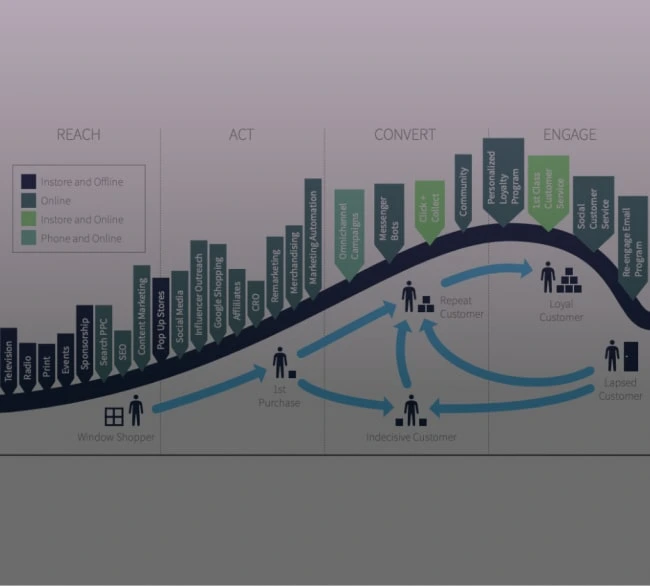
Current Insights:
- Social media marketing is rising every day, with 5.17 billion active users worldwide becoming stronger and has been predicted to grow more.
- For image and video content, social media like Instagram and TikTok are currently on top, but Facebook remains the most active in terms of users. Despite the numbers, brands are finding authentic content to be far more effective and those who converse in a manner that resonates with users are performing better.
- At the same time, there has been a dispute of beliefs about the power of social media. According to a recent survey, 73% of marketers believe social media marketing is “somewhat effective” or “very effective.”
Future Insights:
- Social media platforms will undergo hyper-personalization by 2025 with AI-driven targeting, content creation, campaign management, and more will dominate the social media marketing landscape.
- However, people will still prefer short videos and reels even more. On the flip side, platforms are more likely to engage in augmented reality (AR) and virtual reality (VR).
- At the same time, we should keep in mind that as algorithms progress, organic reach could become even more difficult, bringing up the paid ads as a ‘need’ instead of an ‘option’.
What You Should Do:
From the above insights, it has been clear that the social media marketing industry will go up and beyond. So, to succeed:
- You should actively focus on generating fresh, authentic, and knowledgeable content that people love to engage with and share readily.
- Also, you have to stay informed of algorithm changes, continue with the use of video marketing, and turn to paid socials to target new prospects.
- Make sure your brand is ready for the tech-equipped era by integrating futuristic concepts like AR and personalized AI-integrated marketing techniques.
Building Connections through Social Media
Building connections through social media is a process of demonstrating social activity and interacting with someone or a group of people in a real and purposeful fashion. It is more like reflecting on yourself as real as possible. It means not only posting information but also building connections with audiences, responding to messages & comments, and even establishing a sense of community and belongingness. By focusing on these points, you can improve your brand recognition and word-of-mouth promotion alongside converting random visitors into loyal customers.
If still confused about how to build connections through social media – then read this.
How To Build Connections Through Social Media
- Be active by creating posts, replying to the comments and messages, and sharing posts that are culturally relevant and informative.
- Engage with your audience on an emotional level by using storytelling and get them to participate through polls, questions, and general interesting posts.
- Be relevant with your followers – let your followers know that you care about their opinions, and ensure that the brand’s voice is consistent across all social media platforms.
That’s not all – along with good practices you also have to keep in mind what damages your connections on social media.
What Damages Social Media Connections?
- Avoid being overly promotional or robotic, rather, be real as much as possible.
- Each of your content must be authentic and shareable, if you’re just pushing products without adding value, you definitely are going to lose the potential connections you have built so far.
- Never ignore negative feedback or questions – if you’re leaving comments unanswered then you’re just a few steps away from damaging your brand’s connections on social media.
- Stop spamming your audience – publishing too many posts in a day without relevancy, authenticity, and value can damage your social media connections. You should focus on quality over quantity and ensure your audience remains engaged without feeling overwhelmed.
Driving Interaction with Social Media Audiences

First things first, interaction with social media action is important as it initiates the entire chain of your social media marketing success. You can also say it is a primary block of your social media marketing campaign.
Want to go easier? Alright, let’s take a look here:
Interaction with Social Media Audience ➔ Engagement (Comments, Likes, Shares) ➔ Content Personalization ➔ Emotional Connection ➔ Increased Brand Loyalty ➔ Customer Advocacy (Word-of-Mouth) ➔ Stronger Community Building ➔ Sustained Growth
Leveraging Customer Data for Better Social Media Campaigns
What is Customer Data?
Customer data is the information obtained about the target audience of a particular business, including demographics, behaviors, preferences, and interactions. Such information is most often collected during the customer’s activity on social networks, site visits, and previous purchases.
How Customer Data is Used in Social Media Marketing:
In social media marketing, client information is useful in developing targeted campaigns. Marketers can use customer data to classify the audience, present the content specifically appealing to such groups, and showcase the ads in a way the targeted audience will find suitable, which will also drive engagement and conversion. For example, information about what a person has been doing online assists marketers in creating content that the user will definitely interact with.
Best Tools for Analyzing Customer Data in Social Media

Tools comprehend the process of collecting, evaluating, and utilizing customers better, increasing the success rate of marketing campaigns. The top tools for customer data are:
- Google Analytics
- Hootsuite Insights
- Sprout Social
These tools allow businesses to track customer behavior, analyze social media trends, and optimize campaigns based on real-time data.
Future Trends in Customer Data for Social Media Marketing

- According to a recent report by Forbes, AI will own the crown in handling, analyzing, and making the most out of customer data, resulting in better and more efficient marketing campaigns.
- Hyper-personalization using AI information insights will extend to all social media platforms which means better relevance and hence engagement.
- To achieve competitive advantage in 2025 and beyond, businesses should make vital use of Artificial Intelligence in their marketing practices.
How to create a Social Media Marketing Action Plan?
Before creating a social media marketing action plan, do you know what it is?
What is a Social Media Marketing Action Plan?
Social media marketing action plan is a documented plan that provides a detailed course of action to accomplish social media marketing targets. To a large extent, it aids business people in generating concepts, defining goals, establishing demographics, designing content, and measuring effectiveness. This way, instead of randomly engaging in social media, businesses use planning to set strategies, follow them, and guarantee consistency and effectiveness.
Benefits of a Social Media Marketing Action Plan
- An action plan helps clear the fog so that businesses are well aware of what they are trying to achieve and where they should put their efforts.
- They increase productivity by giving a clear direction and using audience-specific content hence increasing the engagement of the audience and has quantifiable outcomes.
- It simplifies social media campaigns and leads to a higher probability of attaining marketing goals.
Steps to Create a Social Media Marketing Action Plan
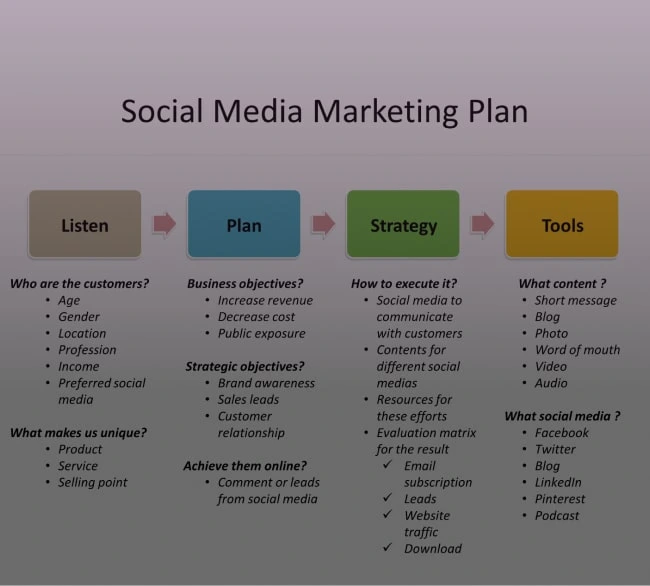
- Set Clear Goals
Set your Social Media goals, for instance, awareness, web traffic, or engagement. We also recommend achieving your goals in line with overarching business objectives and using KPIs as a method of evaluation.
- Identify Your Target Audience
Study everything about your perfect customer in terms of demographics, interests, and online habits, and then select the most potential ones. It also assists in the creation of vital content and gives your campaigns the right audience, at the proper time.
- Choose the Right Platforms
Choose the social networks you think your target audience uses and where your business will benefit from its presence. Not all or any social site is suitable for all brands so one must direct the attention to those sites where the target audience is more active.
- Create a Content Strategy or Content Calendar
Create a content plan that identifies what content you want to post when and where. Make sure the content is appropriate and interesting and matches your brand and your mission.
- Monitor and Adjust
Make sure you pay attention to the metrics of your selected campaign at regular intervals through analytics. Look for what is useful, if your approach is effective, and use that to enhance subsequent campaigns for enhanced effectiveness.
What is the Role of CRM in Social Media Marketing
What is CRM?
CRM stands for Customer Relationship Management which is an application or software through which any organization can manage the record and interaction of its customers right from the initial stage to the final stage. Its purpose is to boost relational, retention, and sales agendas by sorting customer-related data containing behavior, preferences, and actions.
Roles of CRM in Social Media Marketing
- CRM helps in Centralizing Customer Data:
CRM assists in capturing customer information from social media platforms to decipher the behavior pattern of the target market for effective tailored marketing campaigns.
- CRM Enhances Customer Engagement:
When linked with social media platforms, CRM can enable businesses to interact with customers directly, answering their calls or complaints, which boosts the customer satisfaction rate.
- CRM Tracks Social Media Interactions:
CRM also captures the icons like, comments, and shares customers attach to particular posts and this will show the effectiveness of the business’s social media campaign.
- CRM Makes Target Audience Segmentation Easy:
With the help of CRM, the audience can be divided depending on its activity on social networks, which makes it possible to offer customers appropriate content and more accurate advertising or promotions.
- CRM Measures ROI Efficiently:
CRM makes social media marketing efforts tractable by defining customer engagement, conversion, and sales with distinct connections with social networks.
Developing Shareable Content for Social Media

Producing and publishing shareable content is an optimal go when promoting your brand or business on social networking sites. Shareable content is engaging to the target audiences and therefore gets them to comment, like, and eventually share to other networks. It should be credible, possibly educational, or at least amusing, and in any case, should appeal to the target audience in terms of interest and emotions.
For example:
A fun infographic telling people about some advantages of healthy eating will quickly go viral. It is aesthetically pleasing, noticeable, and contains practical information, which means that users will share it with their friends or relatives who are concerned with their health.
Why Should You Create Shareable Content?
This type of content is excellent for increasing recognition of a brand, stimulating comments and likes, and increasing organic posting reach with little to no costs incurred. Sharing always helps your account reach new audiences and consequently, more followers, higher engagement, and sometimes even higher conversion rates, that is why sharing is one of the most important parts of social media marketing.
Earned Media: Boosting Brand Credibility on Social Platforms
What is Earned Media?
Earned media is publicity or exposure that a brand or company gets without necessarily paying for it by placing an advert. This includes mentions in articles, shares on social media, and customer reviews. In other words, it is the applause your brand gets from the public or the media, which aids in strengthening the reputation of your brand.
The Importance of Earned Media
Marketing via earned media has many advantages.
- Earned media is important to businesses, particularly on social media platforms.
- While paid media could be considered as an interference in consumers’ communication process, earned media stems from real dialogues and referrals.
- It is a strategy that helps in the development of trust and loyalty among potential buyers when customers share their experience with your brand.
- Not only does this improve brand authority, but it also helps bring more traffic to your website, boost user participation, and even increase sales.
- Earned media offers brand developers an opportunity to build long-term relationships with target publics and long-term control.
How to Generate Earned Media:
- To create a strong base of your earned media, try to create content that people share and talk about in their community.
- Always reply to comments and ask the people what they have to say.
- Also, partner with influencers as it can expand your brand’s reach over the internet.
Viral Marketing: How to Maximize Social Media Reach

Viral marketing is based on the use of social networks, where the content uploaded goes viral and is rapidly shared among the users, which increases brand visibility.
The foundation of virality over social media lies in knowing your target audience and the kind of content that will create an emotional call to share the content with other people, for corporate events the content should be in a way that the target group wants to share it.
Strategies for Viral Marketing
Through these strategies, you can enhance your social media reach transforming your normal content into attention-grabbing, engaging viral content.
- Focus on Crafting Engaging Content
To maximize your social media reach one should ensure that the generated content is enjoyable, convincing, and easily shareable. This can be in the form of jokes and memes, or cute stories that make people feel an emotion they are unable to express. When the content is more appealing to the audience, and more humoristic, viewers or readers will share it.
- You should Collaborate with Influencers.
Everyone knows that working with influencers is a very effective way of spreading the word. They interact with their audience regularly and their word can help bring more people to your product.
- Encourage User Participation with User Generated Content
Use Hashtags & Tagging and come up with others inviting users to share their own experiences or stories most probably related to the brand. This is not only helpful in increasing the level of engagement of the learners but most importantly helps in creating a small community.
Segmenting Your Audience for Targeted Social Media Efforts
What is Audience Segmentation?
Audience segmentation is the practice of sorting your larger audience into subgroups or segments based on identifiable attributes like age, gender, and behavior. This targeted approach means that marketing is much more personal and efficient in comparison to using traditional methods.
Benefits of Segmenting Your Audience
- Audience segmentation increases the level of interest and the chances of success.
- By segmenting your audiences, you can customize your brand advertisements that appeal to each segment.
- With Audience Segmentation, you can ensure that your content speaks louder.
- Audience Segmentation results in more communication and higher chances of hitting marketing objectives.
Effective Segmentation Strategies
Consider various criteria for segmentation, such as age, location, and purchasing behavior.
By these factors, you develop specific profiles for the targeted audience where social media strategies can be developed with specific content that caters to each of the audience groups.
Tools for Audience Segmentation
Several tools can aid in audience segmentation, including social media analytics platforms like Google Analytics, HubSpot, Segment.io, and more. With these tools you can collect important information about the demographic of the audience, how active they are, what they prefer in a marketing strategy, and much more.
Exploring the Benefits and Drawbacks of Social Media Marketing
Benefits of Social Media Marketing
Increased Brand Awareness: Businesses utilize social media to connect with a larger population hence increasing engagement and exposure.
Cost-Effective Marketing: Social media marketing can cost less compared to traditional media, which makes it popular for every business.
Targeted Advertising: Users can set their preferences such as demography, areas of interest, and other details that allow businesses to display their ads to the right users.
Enhanced Customer Engagement: It directly interacts with the customers in the business and stimulates the relationship and satisfaction of the customers.
Real-Time Feedback: Customers give their feedback conveniently, and businesses can better up their services, products, and the areas of their business that customers are not satisfied with.
Drawbacks of Social Media Marketing
Time-Consuming: Monitoring personal accounts and developing materials can be very time-consuming.
Negative Feedback: Negative comments on social networks are dangerous for your brand image, which is why it is crucial to deal with criticisms wisely.
Algorithm Changes: Updates in social media algorithms impact organic reach and make it difficult for businesses to reach out to your followers.
Content Saturation: Firing the audience’s news feed with too many posts can damage your connection with the audience as they would consider your business page or website engaged in spamming.
Privacy Concerns: The use of customer data involves privacy controversies including legally and transparent data collection and usage.

